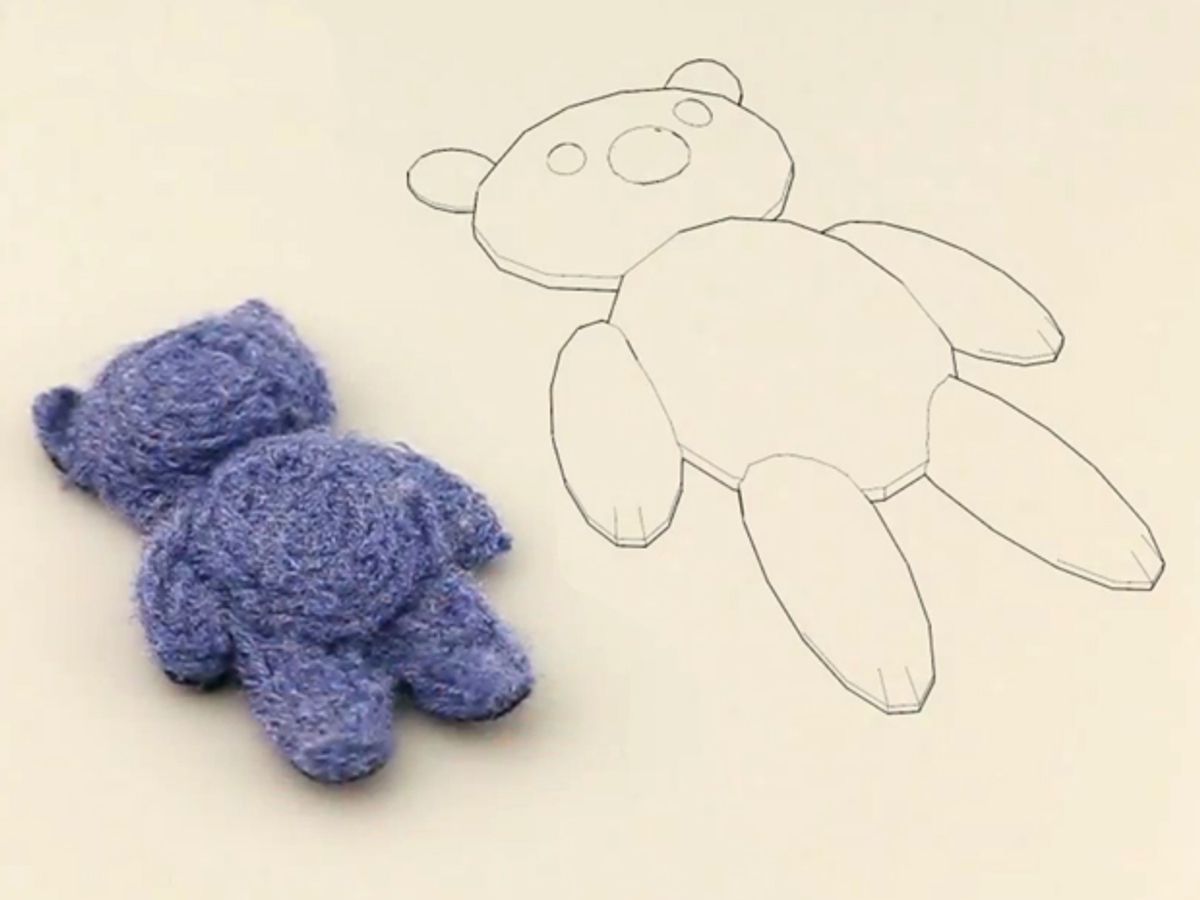A new type of 3-D printer can turn yarn into soft, cuddly objects. 3-D printing typically uses metals and plastics, although researchers are also using them to make food stuff, tissue, and body parts. Researchers at Carnegie Mellon University who designed the new printer say they wanted to extend 3-D printing to a new class of materials for making objects that people would interact with.
The device is a kind of printer-sewing machine hybrid. It takes designs from a computer and converts them into 3-D objects using a loose felt material. The resulting objects are similar to hand-knitted versions, said CMU computer science professor Scott Hudson in a press release. Hudson developed the new printer with Disney Research support, and presented it at the ACM CHI Conference on Human Factors in Computing Systems.
Most common low-end 3-D printers are based on Fused Deposition Modeling, a process in which melted plastic is extruded to create objects layer by layer. The felting printer works in a similar fashion, but emits yarn instead of melted plastic. A barbed felting needle at the printer head repeatedly pierces the yarn, entangling new fibers into the yarn layers below and bonding the layers together.
A key difference, of course, is that because yarn is thick, the printer doesn’t achieve the same dimensional accuracy as conventional 3D printers. So the printed objects don’t look exactly like the computerized design.
The printer could be used to make clothes, scarves, and plush toys. It could also be used to make parts for soft robots that are designed to work near or with people. Whats more, Hudson said it should be possible to design a printer that could produce both fabric and plastic elements in a single fabrication.
Prachi Patel is a freelance journalist based in Pittsburgh. She writes about energy, biotechnology, materials science, nanotechnology, and computing.



